Quick Read
60 Mind-Blowing Facts About Space to Blow Your Mind
Fact 1: Space is not a vacuum, it’s filled with particles and radiation.
Fact 2: The universe is estimated to be around 13.8 billion years old.
Expanding Universe
Fact 3: The universe is still expanding after the Big Bang.
Fact 4: Each galaxy is moving away from every other galaxy.
Planets and Stars
Fact 5: There are over 200 billion galaxies in the observable universe.
Fact 6: Our solar system has eight planets: Mercury, Venus, Earth, Mars, Jupiter, Saturn, Uranus, and Neptune.
Fact 7: A day on Venus is longer than a year, due to its retrograde rotation.
Black Holes
Fact 8: A black hole is a region in space where gravity pulls so hard that nothing can escape, not even light.
Fact 9: The largest black hole discovered is over 10 billion times the mass of our sun.
Gas Giants
Fact 10: Jupiter is the largest planet in our solar system.
Fact 11: Saturn has over 80 known moons, the most of any planet in our solar system.
Astronomical Phenomena
Fact 12: A total solar eclipse occurs when the moon passes directly between Earth and the sun, blocking the sun’s light.
Fact 13: Auroras, also known as the northern and southern lights, occur when charged particles from the sun collide with Earth’s magnetic field.
Meteorites
Fact 14: Meteorites range in size from tiny pebbles to massive boulders.
Fact 15: The largest meteorite ever recorded fell in Siberia, Russia in 1947 and weighed around 20 tons.
Space Travel
Fact 16: The first human to orbit Earth was Yuri Gagarin in 196
Fact 17: The Hubble Space Telescope was launched in 1990 and has captured some of the most detailed images of space.
Space Debris
Fact 18: There is an estimated 29,000 metric tons of debris in Earth’s orbit.
Fact 19: In 2009, a satellite collision created over 2,000 new pieces of debris.

Exploring the Cosmos: A Journey Through the Universe
The Universe : An Endlessly Fascinating Enigma
Estimated to be a staggering
13.8 billion years old
, our Universe, the very expanse of all existence, continues to captivate and intrigue scientists, philosophers, and curious minds alike. According to the link, it all began with a cataclysmic explosion, unleashing the primordial elements that eventually coalesced into galaxies, stars, and planets.
Galaxies
Within the vast cosmic sea, there are approximated to be
approximately 1 trillion
galaxies, each one teeming with its own unique characteristics and grandeur. These celestial metropolises contain
100-200 billion
stars, many of which are home to planets and potentially even life.
The Universe continues to reveal its secrets, challenging us to expand our knowledge and understanding of the very fabric of existence. From the tiniest subatomic particles to the grandest structures within galaxies, the cosmos holds an infinite number of mysteries waiting to be unlocked.

Our Solar System
Our Solar System is a dynamic and
formation
that consists of the Sun, the
star
at its core, and a total of eight planets, each with their unique characteristics. The planets are
Mercury
,
Venus
,
Earth
,
Mars
,
Jupiter
,
Saturn
,
Uranus
, and
Neptune
. In addition, there are numerous dwarf planets and
At the heart of our Solar System lies the Sun, a nearly perfect spherical
luminous
celestial body that provides our solar system with light and heat. The Sun, which is the center of our Solar System, represents approximately 99.86% of its total mass. Its immense gravity holds all the planets in their respective orbits and keeps them bound together as a system.
The Sun is not just a passive celestial body but an essential player in the ecosystems of each planet, influencing their atmospheres, climate patterns, and even the existence of life. The solar radiation drives various geological processes such as plate tectonics and volcanic activity on some planets. The Sun’s energy also fuels the life-supporting processes on Earth, making it the very heart of our Solar System and essential for its sustenance.

The Earth: A Unique Planet
The Earth, the third planet from the Sun, is a magnificent celestial body that stands out among all other planets due to its unique feature of having
surface area
covers an extensive region of 510 million square kilometers (196 million sq mi).
Distinctive Characteristics
Earth’s distinctive characteristics enable it to harbor life. The presence of water and a stable environment/” target=”_blank” rel=”noopener”>climate
have made our planet the ideal home for various plant and animal species, as well as human civilization. Moreover, Earth’s axial tilt of 23.5 degrees allows for diverse weather patterns and distinct seasons – providing a dynamic environment that continues to inspire and sustain life.
Size and Surface Area
Earth’s size is significant when compared to other planets in our solar system. Its
diameter
of 12,742 km makes it the fifth-largest planet in our solar system. However, when considering its surface area, Earth ranks third after Venus and Mars. Its expansive
surface area
of 510 million square kilometers provides ample space for diverse ecosystems and habitats that have allowed life to evolve and flourish.
A Celestial Oasis
In summary, The Earth is a celestial oasis, the only known planet in our solar system to support life. Its liquid water, size, and surface area have combined to create an ideal environment for diverse ecosystems and habitats. Earth continues to inspire awe and wonder, reminding us of our connection to the vast universe beyond our planet.

Our Atmosphere:
The atmosphere of our planet is a vital component that ensures the survival of all living organisms. It is primarily composed of four major gases:
Nitrogen:
Approximately 78%
Oxygen:
Accounting for about 21%
Argon:, Carbon Dioxide, Neon, Helium, Methane, and other trace gases
: The remaining 1%
The protective role of the atmosphere
is multifaceted. One essential function is shielding us from harmful solar radiation and solar wind. The ozone layer, a component of the stratosphere, plays a crucial role in this regard. It absorbs most of the ultraviolet radiation from the sun, preventing it from reaching Earth’s surface and potentially causing DNA damage.
Nitrogen, being the most abundant gas, is primarily responsible for forming the Earth’s atmosphere. It plays a crucial role in the nitrogen cycle, which maintains the balance of nitrogen in nature essential for life. On the other hand, oxygen
is vital for respiration and combustion processes. The presence of oxygen in the atmosphere makes Earth habitable for aerobic organisms, including humans.
Therefore, the composition and functions of our atmosphere
are crucial for sustaining life on Earth. It is essential that we continue to study and understand the intricacies of our atmosphere to ensure its preservation for future generations.

Space:
Space, the vast expanse that surrounds all matter in the universe, is often misperceived as an empty vacuum. However, modern scientific understanding reveals that it contains various forms of energy and radiation. One such phenomenon is the cosmic microwave background radiation (CMBR), a faint yet pervasive electromagnetic wave that permeates the universe. Discovered in 1964 by Arno Penzias and Robert Wilson, this radiation is thought to be a remnant from the Big Bang itself.
No Up or Down:
On a different note, space challenges our human perception in other ways. Contrary to our everyday experience on Earth, there is no inherent up or down in space. Instead, directions such as north, south, east, and west are defined relatively based on celestial bodies or gravitational forces. This concept can be challenging for us as terrestrial beings to grasp, but it is essential in understanding the vastness and complexity of our universe.

The Stars: A Universe of Nuclear Fusion, Colors, Sizes, and Temperatures
Stars, those twinkling specks of light scattered across the night sky, have long fascinated us humans. They not only provide the necessary light for us to navigate through the darkness but also play a crucial role in our universe. Let’s delve into their fascinating world and discover how they produce energy, their various sizes, colors, and temperatures.
Nuclear Fusion: The Energy Source of Stars
Stars generate their incredible energy through a process called nuclear fusion. In this process, hydrogen atoms are combined under extremely high pressure and temperature to form helium. This reaction releases an enormous amount of energy in the form of light and heat.
Stars: A Rainbow in the Sky
The enchanting spectacle of stars comes in various colors, which can be attributed to their temperatures. The hotter the star, the bluer its color. Conversely, red and orange hues signify cooler stars.
Sizing Up Stars: From Tiny to Massive
Stars vary greatly in size, ranging from small red dwarfs that are just about the size of Jupiter to enormous blue giants, which can be more than 300 times larger than our Sun. Despite their differences in size, stars all share a common goal: to maintain equilibrium between the inward pull of gravity and the outward force of radiation.
Stars: A Temperature Rollercoaster
Temperature is another essential factor in understanding the intricacies of stars. The temperature scale ranges from cooler red stars with temperatures around 3,000 Kelvin to extremely hot blue giants with temperatures over 50,000 Kelvin. Our Sun, which is classified as a yellow dwarf star, falls in the middle of this temperature range.
The Sun: Our Closest Star and the Source of Life-Giving Energy
The Sun, located about 93 million miles away from Earth, is more than just a celestial body that lights up our sky. It’s the closest star to our planet and plays a vital role in sustaining life on Earth.
The Sun: Our Closest Star
Being the closest star to our planet, the Sun is a massive ball of hot, glowing gas. Its enormous size and brightness make it an awe-inspiring sight in our sky. However, its proximity to Earth means more than just being a beautiful spectacle; it significantly influences our planet’s climate and weather patterns.
Life-Giving Energy: The Sun’s Role in Sustaining Life on Earth
The Sun is not just a passive observer of Earth; it plays an active role in supporting life on our planet. The energy the Sun provides is essential for all forms of life. Solar radiation, primarily in the form of visible light and invisible electromagnetic waves, reaches Earth and is absorbed by various living organisms. This energy is used for photosynthesis – the process by which plants convert sunlight into food – and to maintain a suitable temperature for life to thrive. The Sun’s energy is also vital in driving Earth’s climate system, influencing wind patterns and ocean currents.
In Conclusion
In summary, the Sun is more than just a star in our night sky. It’s the closest star to Earth and provides us with essential energy that makes life possible on our planet. Its proximity and influence on Earth contribute significantly to shaping our climate and weather patterns.
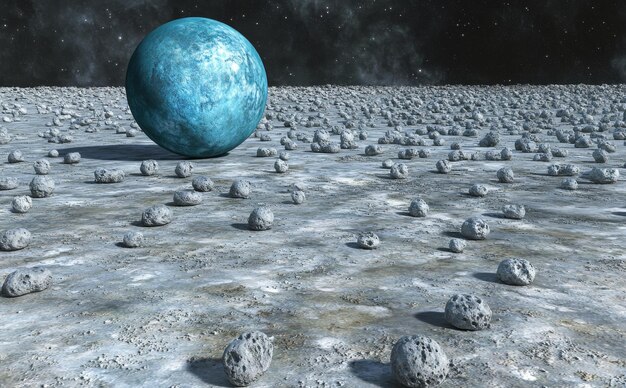
The Moon: Earth’s Constant Companion
The Moon, Earth’s only natural satellite, has been a source of fascination for humans since time immemorial. Its presence in the night sky has been a constant reminder of the cycles of life and the passage of time.
Unique Characteristics
Despite its proximity to Earth, The Moon is distinct in many ways. It has no atmosphere and no liquid water on its surface. This makes it a unique celestial body with characteristics quite different from those of Earth.
Impact on Earth
The absence of an atmosphere on the Moon means that it experiences no weather phenomena, and its surface remains largely untouched by natural processes. The lack of liquid water is a significant barrier to life as we know it. However, recent discoveries of water ice in the lunar poles have renewed interest in exploring the Moon for potential resources.
Exploration and Scientific Significance
Despite these challenges, the Moon holds great scientific significance. Its lack of an atmosphere makes it an ideal laboratory for studying geological processes, as well as providing valuable insights into Earth’s history. Moreover, the Moon’s proximity to Earth makes it an accessible target for exploration and scientific research. In recent years, there has been renewed interest in returning humans to the Moon, with the ultimate goal of establishing a sustainable lunar presence.
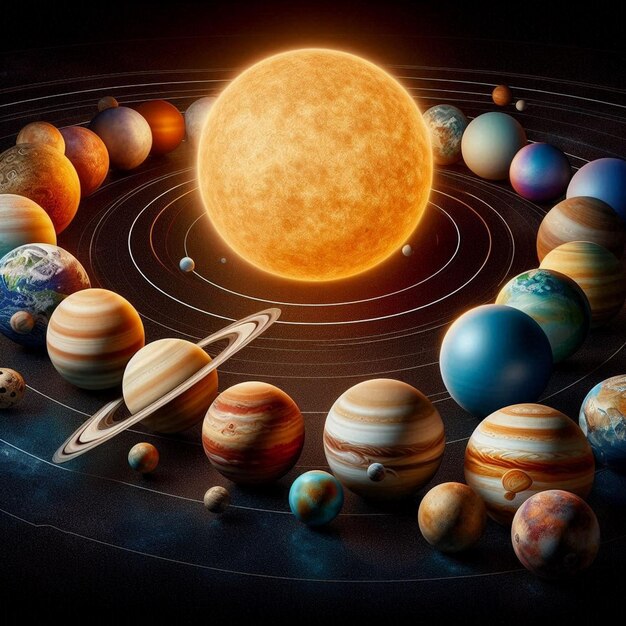
Nine Planets in Our Solar System
Our solar system is a celestial marvel, housing an array of planets that orbit around the Sun. Nine distinct planets, each with its unique characteristics, make up this cosmic neighborhood: Mercury, Venus, Earth, Mars, Jupiter, Saturn, Uranus, Neptune, and Pluto.
Mercury
The innermost planet in our solar system, Mercury, is a small, dense, and rocky world with an extreme temperature range.
Venus
Venus, the sister planet to Earth, is our solar system’s brightest natural object. This planet is shrouded in thick clouds and extreme conditions, including a runaway greenhouse effect leading to high temperatures.
Earth
Our home planet, Earth, is the third from the Sun. It is unique in having a diverse range of ecosystems that support an abundant array of life.
Mars
Mars, the red planet, is known for its reddish appearance due to iron oxide (rust) on its surface. This terrestrial planet has a thin atmosphere and the largest volcano in our solar system, Olympus Mons.
Inner Planets: Mercury, Venus, Earth, and Mars
These four planets are collectively called the inner planets or terrestrial planets since they have solid surfaces.
Jupiter
Jupiter, the largest planet in our solar system, is a gas giant. With its iconic Great Red Spot, this massive world is known for its numerous moons and powerful magnetic field.
Saturn
Saturn, another gas giant, is easily recognizable by its prominent ring system. Its beautiful rings are made of ice particles and rock.
Gas Giants: Jupiter and Saturn
These two planets, Jupiter and Saturn, are collectively referred to as gas giants due to their large sizes and gaseous compositions.
Uranus
Uranus, an ice giant, is the seventh planet from the Sun. It is unique for its tilted axis and blue color, which comes from methane in its atmosphere.
Neptune
Neptune, the eighth planet, is another ice giant and shares similarities with Uranus. It is known for its deep blue color due to methane in its atmosphere, as well as the largest storm in our solar system, the Great Dark Spot.
Outer Planets: Uranus, Neptune, and Pluto
These three planets are collectively known as the outer planets. They have larger orbits, gaseous compositions, and are often farther from the Sun than Earth.
Pluto
Pluto, a dwarf planet, was once considered the ninth planet in our solar system. It is located in the Kuiper Belt and has five known moons.
Galaxies: Cosmic Islands in the Universe
Galaxies are immense structures composed of stars, gas, dust, and dark matter, bound together by gravity. They vary in size, shape, and composition. One of the most famous galaxies, just over 2.5 million light-years away from us, is the Andromeda Galaxy (M31), which is the closest spiral galaxy to our own Milky Way. Andromeda, visible under clear night skies with the naked eye, exhibits beautiful spiral arms and a prominent central bulge.
Classification of Galaxies
Since the early days of astronomical research, scientists have sought to categorize galaxies based on their observed characteristics. One widely used classification system is the Hubble Sequence. This scheme divides galaxies into several distinct morphological types, ranging from elliptical to irregular:
Elliptical Galaxies (E)
These galaxies have a smooth, nearly spherical shape with no prominent structure other than their bright center. Ellipticals contain older stars and have little to no star formation.
Lenticular Galaxies (S0)
These galaxies exhibit a lens or disk shape with a small central bulge. They contain older stars and have little star formation, similar to ellipticals.
Spiral Galaxies (Sa – Sd)
Characterized by their beautiful, winding spiral arms and central bulge, spiral galaxies have active star-forming regions. Their arms wind more tightly towards the center (Sa) and become looser as they move outward (Sd).
Irregular Galaxies (I)
These galaxies lack a regular shape or symmetry. Their chaotic structures are likely the result of mergers, collisions, or other disruptive events. Star formation in irregular galaxies can be quite active.
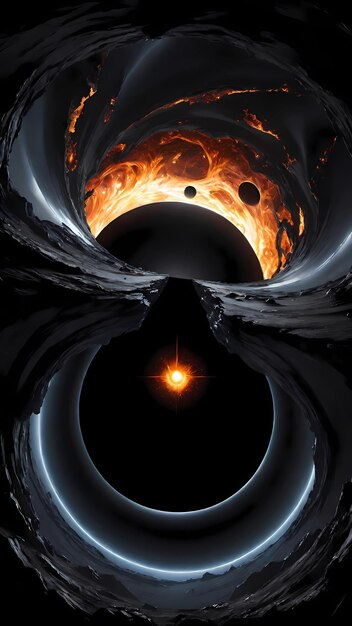
Black Holes:
Black holes, a cosmic phenomenon of immense gravitational power, are defined by their unique property of having a gravitational pull so extremely strong that not even light can escape their grasp. This enigmatic feature makes black holes virtually invisible, as they absorb all electromagnetic radiation within their vicinity.
Formation of Black Holes:
Black holes are believed to form when massive stars, that have exhausted their nuclear fuel and undergone successive stages of stellar evolution, collapse in on themselves. The gravitational force exerted by such celestial bodies becomes so intense during the final stages of stellar collapse that it compresses the matter into a singularity – a point in space where volume is infinitely small, yet mass is infinite. The boundary around this singularity is known as the event horizon, marking the point of no return beyond which neither matter nor radiation can escape.
Characteristics and Classification of Black Holes:
Black holes come in various sizes, ranging from stellar-mass black holes (typically between 3 and 100 solar masses) to supermassive black holes (millions or even billions of solar masses). Their classification is determined by their mass, spin, and electric charge. Stellar-mass black holes are thought to reside at the cores of young star clusters or binary systems, while supermassive black holes are found at the centers of galaxies.
Impact and Significance of Black Holes:
The discovery and study of black holes have significantly expanded our understanding of the universe’s mysteries, providing crucial insights into its structure, composition, and evolution. These enigmatic entities continue to fuel our curiosity and inspire scientific exploration, offering tantalizing glimpses of the extreme conditions that exist at their cores. As we delve deeper into the study of black holes and their intricacies, we can only marvel at the wonders of the cosmos and the unfathomable depths of human intellect.
Conclusion:
In conclusion, black holes represent one of the most fascinating and intriguing aspects of our universe. Their extreme gravitational pull and mysterious nature have captivated scientists and the public alike, driving groundbreaking research and discovery. As we continue to explore these cosmic enigmas, we are reminded of humanity’s innate curiosity and our unrelenting quest for knowledge.

Quasars: The Cosmic Titans of Energy
Quasars, a mysterious and enigmatic phenomena, are among the most powerful sources of energy known in the universe. Their radiance surpasses that of
100 galaxies
and billions of stars combined, making them a stellar paradox in the vast cosmic arena. The energy they emit is not confined to the electromagnetic spectrum, but extends to
extreme wavelengths
, including gamma rays, X-rays, and ultraviolet radiation. This prodigious energy output is attributed to supermassive black holes at their core, which are surrounded by
accretion disks
of gas and dust. These accretion disks emit light as they spiral towards the black hole, generating the immense luminosity characteristic of a quasar. The study of these celestial titans offers valuable insights into the
evolution and structure of galaxies
, as well as the fundamental principles governing the physics of black holes.
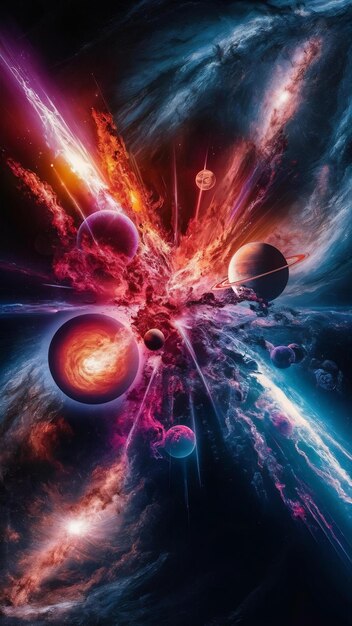
The Universe’s Expansion
The Universe’s Expansion, a fundamental concept in modern cosmology, is the observed increase in distance between galaxies over time. This expansion is most notably evidenced by the Cosmic Microwave Background Radiation (CMB), the residual heat left over from the Big Bang.
The Cosmic Microwave Background Radiation
The CMB is the electromagnetic radiation left over from the Big Bang and is observed as a faint, uniform glow filling the entire observable universe. It was first detected in 1964 by Arno Penzias and Robert Wilson, who were awarded the Nobel Prize for their discovery in 1978.
Evidence of Expansion
The evidence that the universe is still expanding comes from several sources. One of the most significant is the observation of redshift in the light emitted by distant galaxies. Redshift occurs when light waves are stretched out, making them longer and less energetic, as they move away from an observer. The further away a galaxy is, the greater its redshift. This phenomenon can only be explained by the expanding universe theory.
The Hubble Law
Edwin Hubble first discovered the relationship between redshift and distance in 1929, which is now known as Hubble’s Law. It states that the velocity of a galaxy is directly proportional to its distance from us. This law provides strong evidence that the universe is expanding.
The Cosmological Principle
Another observation that supports the expanding universe theory is the Cosmological Principle, which asserts that the universe appears uniform and unchanging in all directions, on average. This principle implies that the expansion must be occurring uniformly throughout the universe, not just in certain regions.
The Large Scale Structure of the Universe
Finally, the large scale structure of the universe also supports the expanding universe theory. The distribution of galaxies and galaxy clusters suggests that they were once much closer together and have been moving away from each other since the Big Bang.
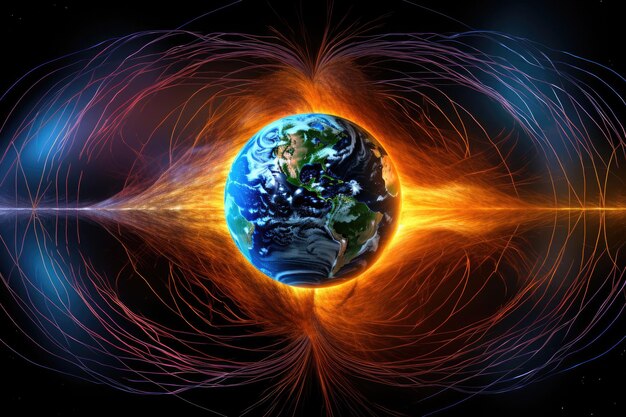
Dark Matter:
Dark matter is an enigmatic and elusive component of the universe, accounting for approximately 27% of its total mass-energy density. This figure is based on observations of the distribution and motion of galaxies and galaxy clusters, which indicate that there is far more mass present than can be accounted for by the matter that we can directly observe.
Massive yet Invisible:
Despite its significant role in shaping the large-scale structure of the universe, dark matter remains a mystery due to its inability to interact with electromagnetic radiation. This means that it cannot be directly observed through the methods we use to detect light, such as telescopes.
A Hidden World:
Instead, the existence and properties of dark matter are inferred from its gravitational effects on visible matter. The lack of interaction with electromagnetic radiation makes it a challenging subject to study, but ongoing research using various methods and technologies continues to shed new light on this hidden world.
The Search Continues:
Scientists are working tirelessly to detect dark matter particles directly, using experiments such as the Large Hadron Collider and various types of particle detectors. These efforts could lead to a breakthrough discovery that would help us understand more about the nature of dark matter and its role in the universe’s history and future.
The Cosmic Puzzle:
In summary, dark matter is a crucial component of the universe that makes up about a quarter of its total mass-energy density. Although it cannot be directly observed because it does not interact with electromagnetic radiation, its presence can be inferred through its gravitational effects on visible matter. The ongoing search for direct evidence of dark matter represents a significant challenge and an intriguing mystery that continues to captivate the scientific community.
A Fascinating Journey:
As we continue to explore this fascinating topic, new discoveries and insights are likely to emerge, helping us unlock the secrets of dark matter and deepen our understanding of the universe we inhabit. Stay tuned for more updates on this captivating cosmic puzzle!

Dark Energy: The Enigmatic Force Driving the Universe’s Expansion
Dark Energy, an elusive and mysterious cosmic phenomenon, is estimated to constitute approximately 68% of the total mass-energy density of the universe. Its existence was first inferred from observations of the cosmic microwave background radiation and the large-scale structure of the universe. The most widely accepted theory explaining Dark Energy is that of a cosmological constant, which can be thought of as an inherent property of space itself, creating a sort of “vacuum energy” that exerts a repulsive force on all matter. This force is so powerful, it drives the universe’s expansion to accelerate, leading to the current observation that the expansion of the universe has been steadily increasing in rate over the past few billion years. The implications of this discovery are profound, as it fundamentally alters our understanding of the universe’s structure and destiny.
A Repulsive Force Like No Other
Dark Energy’s influence is unlike that of any other known force in the universe. While gravity attracts matter towards each other, Dark Energy pushes matter away. The exact nature and origin of this force remain a subject of ongoing research, as it is still not fully understood. Some theories suggest that Dark Energy might be related to the quantum vacuum fluctuations at the subatomic level, while others propose more exotic possibilities such as a form of dark matter with negative energy density. Regardless of its nature, Dark Energy’s presence and influence on the universe are indisputable.
Observational Evidence for Dark Energy
The evidence for the existence of Dark Energy comes primarily from two main observations: the cosmic microwave background radiation and the large-scale structure of the universe. The former refers to the faint, nearly uniform glow of electromagnetic radiation that permeates the entire observable universe. By studying the temperature fluctuations in this radiation, scientists have been able to infer the presence and properties of Dark Energy. The latter observation comes from studying the distribution and clustering of galaxies over large scales. It has been found that the observed galaxy distribution can only be explained if there is a significant amount of Dark Energy present.
Implications for the Future of the Universe
The presence of Dark Energy has major implications for the future of the universe. With its repulsive force driving the expansion of the universe, it is now believed that the eventual fate of the universe will be a state known as “Big Rip.” In this scenario, the expansion of the universe will continue to accelerate until all matter is torn apart, leading to the end of the universe as we know it. This prospect highlights the importance of understanding Dark Energy and its properties, as our very existence within this expanding cosmos depends upon it.

The Multiverse Theory
The Multiverse Theory, also known as the Many-Worlds Interpretation or Parallel Universes Hypothesis, is a thought-provoking concept that challenges our perception of reality. This theory suggests that our universe is just one of many universes, an infinite multitude of parallel universes, each with its unique set of fields, interactions, and histories. These universes are thought to be interconnected through a multidimensional fabric, known as the “multiverse” or the “multiversum“.
Origins and Development of the Theory
The idea of a multiverse can be traced back to various scientific theories and philosophical concepts, such as string theory, which proposes that the universe has more than three spatial dimensions. However, it wasn’t until the late 1950s that physicist Hugh Everett III introduced the Many-Worlds Interpretation as a possible solution to the interpretational challenges of quantum mechanics.
Key Concepts and Implications
If the Multiverse Theory is correct, every possible outcome of a quantum event creates a separate universe. This means that there could be an infinite number of universes, each one representing a different version of reality based on the outcomes of quantum events. Some of these universes may have conditions vastly different from our own, leading to various intriguing implications.
Implication 1: The Observer Effect
In a multiverse, the act of observation does not alter the outcome, only the observer’s knowledge of it. This concept is counterintuitive but follows logically from quantum mechanics.
Implication 2: Infinite Possibilities
Every possible universe, every possible outcome, exists in the multiverse. This means that there could be an infinite number of versions of ourselves and an infinite number of alternate histories.
Implication 3: Ethical and Philosophical Implications
The Multiverse Theory raises profound ethical and philosophical questions about the nature of reality, consciousness, and the meaning of life. Does every universe have its own consciousness? If so, what is the relationship between these consciousnesses? Can we communicate with beings in other universes?
Current Status and Future Research Directions
Despite its intrigue, the Multiverse Theory remains a contentious topic in scientific circles. There is no concrete evidence to prove or disprove its validity, and many scientists remain skeptical of its implications. However, the theory continues to inspire research in various areas of physics, mathematics, and philosophy.

Wormholes
Wormholes, a concept in theoretical physics, are hypothetical tunnels through spacetime that could potentially shorten the distance between two points in space, even if they are separated by vast distances. According to Einstein’s theory of general relativity, the existence of wormholes might be possible due to the presence of extreme gravitational forces. These forces could warp and bend spacetime in such a way that it forms a tunnel, connecting two otherwise disparate locations.
Faster-than-Light Travel and Time Travel
One of the most intriguing aspects of wormholes is their potential to enable faster-than-light (FTL) travel. In theory, a spacecraft could traverse a wormhole instead of traveling the long and arduous journey through normal spacetime. Additionally, time travel is another intriguing possibility. Some theoretical models suggest that traveling through a wormhole could allow one to experience time differently on either side, effectively moving backward or forward in time.
Current Understanding and Future Research
Despite the captivating nature of wormholes, it’s important to note that they have not been observed or proven to exist. The mathematical models that describe wormholes are based on the assumptions of general relativity and other related theories, but they have yet to be definitively confirmed with empirical evidence. Therefore, ongoing research in physics aims to explore these concepts further, both theoretically and experimentally, to shed more light on the potential existence and implications of wormholes.
Conclusion
Wormholes represent an intriguing concept in theoretical physics, potentially offering solutions to the challenges of traversing vast distances through spacetime. Though they have yet to be observed or definitively proven to exist, the continued exploration of their theoretical foundations and possible experimental evidence can lead us closer to understanding their true nature and potential implications for our understanding of the universe.

Time Dilation:
Time dilation, a fascinating concept in modern physics, refers to the phenomenon where time is perceived to pass more slowly in stronger gravitational fields or when an observer approaches the speed of light. This counterintuitive effect was first proposed by Albert Einstein as part of his groundbreaking theory of relativity.
Gravitational Time Dilation:
According to Einstein’s general theory of relativity, mass and energy cause a distortion in the fabric of spacetime known as a gravitational field. Clocks that are closer to a massive object experience time passing more slowly than those farther away. This has been confirmed through various experiments, such as the famous link.
Relativistic Time Dilation:
In the realm of special relativity, time dilation occurs as an object approaches the speed of light. According to Einstein’s theory, as an object’s velocity increases, its length contracts and time slows down for that object relative to a stationary observer. This effect was first predicted by Einstein based on his equations of relativity and has been confirmed through various experiments, such as the link experiments.
Implications and Applications:
The discovery of time dilation has far-reaching implications for our understanding of the universe. It challenges our everyday intuition about the passage of time and highlights the interconnectedness of space, mass, and energy. In practical terms, it can be used to make highly precise measurements of time and even has potential applications in areas such as atomic clocks and GPS systems.

Exploring the Possibility of Alien Life: A Continuous Quest in Scientific Research
The idea of life existing beyond Earth remains an intriguing and ongoing topic of scientific research and debate. With the vastness of the universe and the countless planets it harbors, many scientists believe that the possibility of extraterrestrial life is a real possibility.
Promising Candidates in Our Solar System
Some planets within our own solar system have gained significant attention as the most promising candidates for harboring alien life. Mars, with its reddish color and iron oxide (rust) deposits, was once believed to have the necessary conditions for supporting water and, therefore, life. However, recent evidence suggests that Mars is currently a dry and inhospitable world.
Mars: A Drying World
Despite this setback, Mars still holds some appeal for researchers. Its polar ice caps are known to contain large quantities of water ice, and the presence of methane in its atmosphere is a topic of ongoing study as it could be indicative of biological activity.
Europa: A Hopeful Moon
Another celestial body that continues to pique the interest of scientists is Europa, a moon orbiting Jupiter. With its subsurface ocean believed to be in contact with a rocky core and possibly harboring more water than Earth, Europa is considered one of the most promising candidates for extraterrestrial life in our solar system.
Why Europa?
Europa’s ocean remains shielded from the solar radiation and cosmic bombardment by its thick icy crust. Moreover, recent data from the Europa Clipper mission indicates plumes of water vapor erupting from its surface, which could be a sign of ongoing geological activity.
The Continuous Quest for Answers
In summary, the search for alien life continues to be a major focus in scientific research. With promising candidates such as Mars and Europa, the quest for understanding if we are alone in the universe remains an exciting and ongoing journey.
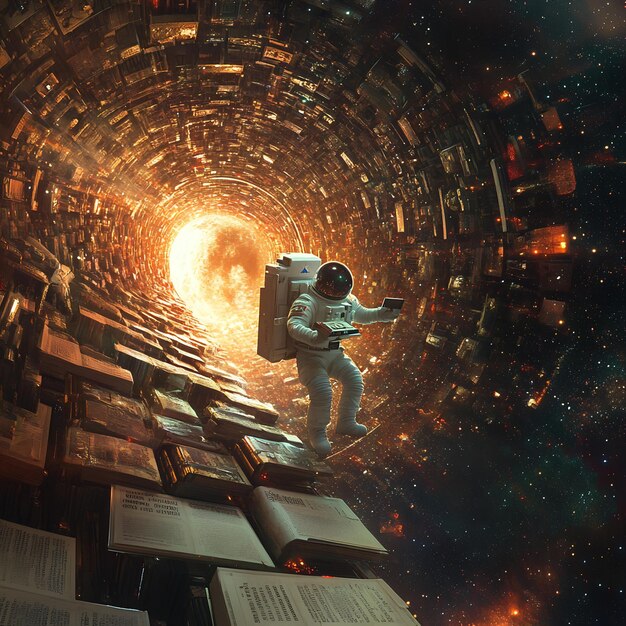
Interstellar Travel
20. Interstellar Travel: With current technology, interstellar travel remains a captivating concept in the realm of science fiction. The vastness of space and the seemingly insurmountable distances between stars present formidable challenges for human exploration beyond our solar system. However, scientists and engineers continue to push the boundaries of knowledge and innovation in their pursuit of viable methods for interstellar travel.
Exploring New Frontiers
The allure of interstellar travel lies in the potential for expanding human understanding and reaching new frontiers. The exploration of other planets and galaxies holds the promise of discovering unique environments, potentially habitable worlds, and diverse forms of life. Moreover, interstellar travel could provide valuable insights into the origins of the universe itself, deepening our appreciation for its complexity and mystery.
Concepts and Innovations
Several theoretical concepts are currently being explored to address the challenges of interstellar travel. One such idea is the warp drive, which could potentially allow spacecraft to travel faster than the speed of light by manipulating the fabric of spacetime. Another concept is the use of wormholes, which, if feasible, could provide shortcuts through space and significantly reduce travel times. Furthermore, advancements in propulsion systems, such as nuclear pulse propulsion and ion drives, are being investigated to improve the efficiency and capabilities of current spacecraft.
Overcoming Challenges
The journey to interstellar travel is fraught with numerous challenges, including the need for massive amounts of energy, shielding against cosmic radiation, and the psychological and physical tolls of extended space travel on human crews. Despite these obstacles, researchers remain committed to overcoming them in order to make interstellar exploration a reality and unlock the wonders that await us among the stars.

Exoplanets:
Exoplanets, also known as extrasolar planets, are celestial bodies that orbit stars outside our solar system. With the Kepler Space Telescope‘s groundbreaking discovery of over 2,600 potential exoplanets between 1995 and 2018, our understanding of the cosmos has expanded exponentially. The
Kepler Mission
revolutionized the search for exoplanets by using a transit method, observing slight dips in starlight as planets passed in front of their stars.
Habitable Zone Exoplanets:
Among these discovered exoplanets, a significant number lie within the habitable zone, also known as the Goldilocks Zone. This term refers to the optimal distance from a star where conditions could potentially allow for liquid water on a planet’s surface. The habitable zone is not guaranteed to contain life, but it significantly increases the likelihood of finding conditions similar to those found on Earth.
Size, Composition and Atmospheric Conditions:
These exoplanets vary greatly in size, composition, and atmospheric conditions. Some are gas giants similar to Jupiter or Saturn, while others may be rocky planets like Earth. The study of these diverse exoplanets provides valuable insights into the formation and evolution of planetary systems outside our solar system.
Future Discoveries and Research:
As technology advances, new observatories like the link and the European Space Agency’s link will enable us to gather more detailed information about exoplanetary properties, including their atmospheric compositions and surface temperatures. This knowledge will contribute significantly to our understanding of the universe and potentially lead us closer to discovering habitable worlds beyond our solar system.
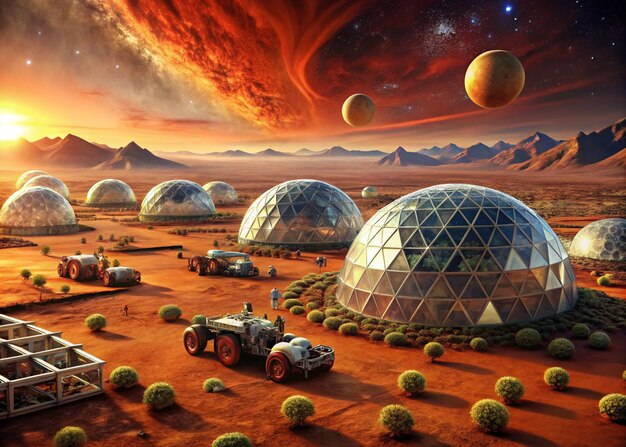
The Fermi Paradox: A Mystifying Absence of Extraterrestrial Civilizations
The Fermi Paradox, a thought-provoking enigma in the realm of astrobiology and astrophysics, posits an intriguing question: “Given the vast number of planets and galaxies in the universe, why have we not observed any evidence of extraterrestrial civilizations?” This conundrum was first broached by physicist Enrico Fermi during a lunchtime discussion with colleagues at Los Alamos National Laboratory in 1950. The Pareto Principle, also known as the “80-20 rule,” suggests that about 80% of the total population or resources are in just 20% of the areas, so it seemed statistically likely that at least some advanced civilizations should have arisen and left detectable traces.
The Drake Equation
In an attempt to quantify the possibilities, astronomer Frank Drake formulated the Drake Equation in 196This equation is a probabilistic argument used to estimate the number of active, communicative extraterrestrial civilizations in our Milky Way galaxy. It considers various factors such as star formation rate, planets per star, percentage of habitable planets, development of life, and technological civilization.
Three Hypotheses
Despite numerous efforts in SETI (Search for Extraterrestrial Intelligence) research, no definitive evidence of extraterrestrial civilizations has been discovered. Three prominent hypotheses attempt to explain the Fermi Paradox: (1) the Zoo Hypothesis, which suggests that advanced civilizations are preventing contact with us; (2) the Great Filter, proposing that some catastrophic event prevents the development of advanced civilizations; and (3) the Wow! Signal Hypothesis, which refers to an unexplained narrowband radio signal detected in 1977, although its origin remains unproven.
Implications and Future Directions
The Fermi Paradox invites continued investigation and debate in the scientific community. It highlights the importance of considering a broader range of possibilities, including those beyond our current understanding. Future research in fields such as astrobiology, planetary science, and technological advancements may provide new insights into the existence or non-existence of extraterrestrial civilizations.
Conclusion
In summary, the Fermi Paradox represents a fundamental question in our quest for understanding the universe. Despite the lack of definitive evidence to date, ongoing research and exploration are essential for addressing this intriguing enigma and expanding our knowledge beyond the confines of Earth.

The Search for Extraterrestrial Intelligence (SETI)
The Search for Extraterrestrial Intelligence (SETI), an ongoing scientific research program since the mid-20th century, is dedicated to the detection of intelligent signals from space. This ambitious quest seeks to answer the age-old question: “Are we alone in the universe?” (
Fraulein Doktor, 1960
)
The SETI Institute, a leading organization in this field, uses radio telescopes to search for narrow-bandwidth signals that would be indicative of advanced extraterrestrial civilizations. These signals, if detected, would differ significantly from natural phenomena such as astronomical noise or man-made interference. (
Project Phoenix
)
One of the most well-known components of this research is the O SETI@home experiment. By distributing the computational workload across volunteer-donated computers worldwide, it increases processing power exponentially, allowing a continuous search of archived data from major radio telescopes. (
BOINC
)
Apart from radio signals, other methods such as optical SETI and the search for technosignatures, or physical evidence of extraterrestrial technology, are also being explored. The latter includes projects like Breakthrough Starshot, which plans to send a lightweight spacecraft toward Proxima Centauri to capture images of possible alien megastructures. (
Arecibo Observatory
)
The SETI program faces numerous challenges, including the vastness of space, the paucity of known habitable planets, and our limited understanding of alien intelligence. Yet, it continues to inspire hope, fuel scientific curiosity, and drive humanity’s collective imagination towards a future where we might finally make contact with other intelligent beings in the cosmos. (
Contact
)
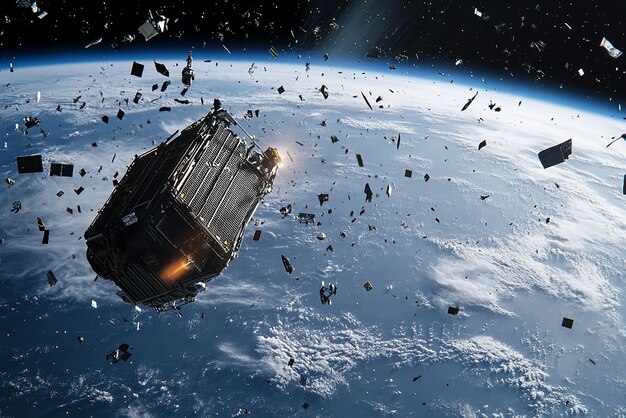
Space Debris
Space debris, a significant concern for the space industry and space agencies worldwide, refers to the accumulation of human-generated objects in Earth’s orbit. This debris encompasses a vast array of items ranging from defunct satellites and spent rocket stages to fragments resulting from collisions between spacecraft and smaller particles.
Orbital Debris: A Growing Concern
The orbital debris issue has been escalating due to the increasing number of launches and space missions since the beginning of the Space Age. According to estimates by NASA, there are over 29,000 tracked objects larger than a softball in Earth’s orbit, and millions more smaller than that. This debris poses a significant risk to operational spacecraft and future missions.
Collision Risks and Consequences
The presence of space debris in Earth’s orbit increases the probability of collisions, which can result in catastrophic consequences. A collision between a satellite and a piece of space debris could lead to the destruction of both objects, releasing even more debris into orbit and potentially damaging or disabling other satellites. This ripple effect can have serious consequences for various industries that rely on space-based technology, such as telecommunications, navigation, weather forecasting, and remote sensing.
Mitigating the Threat of Space Debris
Space agencies and international organizations have implemented several strategies to mitigate the threat of space debris. These include tracking and cataloging debris, implementing collision avoidance maneuvers for operational satellites, and developing technologies to remove debris from orbit. Additionally, organizations like the link and NASA are collaborating on initiatives to reduce the amount of debris generated during launches and to develop standards for responsible de-orbiting.
Conclusion: A Collective Effort
Addressing the issue of space debris requires a collective effort from all stakeholders, including governments, space agencies, and the private sector. By implementing effective mitigation strategies, we can minimize the risks posed by orbital debris and ensure the long-term sustainability of space-based technology and our presence in orbit.
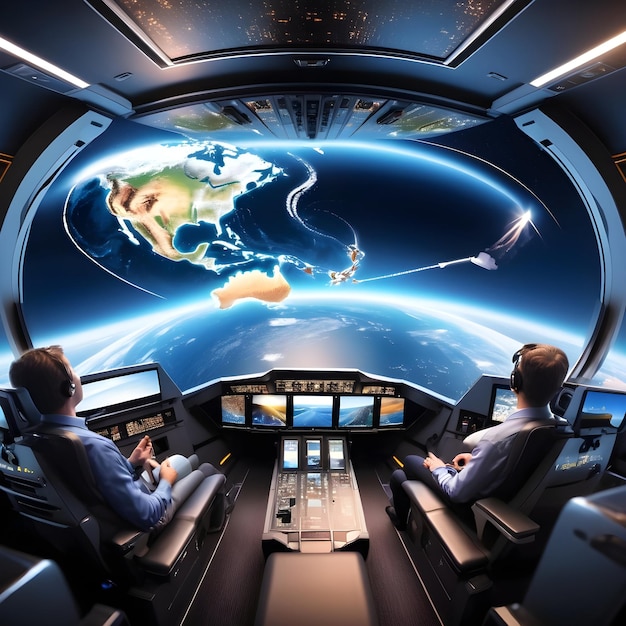
Space Tourism: A New Frontier in Commercial Travel
The realm of space tourism is swiftly emerging as the next frontier in commercial travel. Pioneering companies like SpaceX, Blue Origin, and Virgin Galactic are leading the charge towards making space travel an accessible and thrilling experience for tourists. With each company bringing unique offerings to the table, the future of space tourism promises exhilarating opportunities for adventure-seekers and history-makers alike.
SpaceX: Paving the Way with Reusable Rockets
Elon Musk’s SpaceX is at the forefront of making space travel more affordable and accessible. Revolutionizing the industry with its reusable Falcon 9 rockets, SpaceX has successfully launched multiple missions and is targeting regular trips to the International Space Station (ISS). Moreover, SpaceX unveiled its Starship spacecraft, designed to carry 100 passengers on trips to the Moon, Mars, and beyond.
Blue Origin: Suborbital Flights and Beyond
Jeff Bezos‘s Blue Origin has already provided suborbital space flights to paying customers. The New Shepard rocket, which is fully reusable, takes passengers on a thrilling journey past the Karman line – the internationally recognized boundary of space – for about three minutes before returning to Earth. Blue Origin’s long-term vision includes developing orbital tourism and establishing a sustainable human presence on the Moon.
Virgin Galactic: First Commercial Spaceline
Richard Branson’s Virgin Galactic was the first commercial spaceline to announce plans for suborbital space flights. With its SpaceShipTwo, passengers can experience a few minutes of weightlessness and view Earth from above. Although the launch schedule has faced delays, Virgin Galactic remains committed to delivering an unforgettable space travel experience for its customers.
Looking Forward: Endless Opportunities in Space Tourism
These trailblazing companies, along with others, are opening the doors to space travel for tourists. The possibilities are endless as we venture deeper into the cosmos – from orbital hotels and moonbase vacations, to exploring Mars and other planets. Stay tuned for further advancements and developments in space tourism.
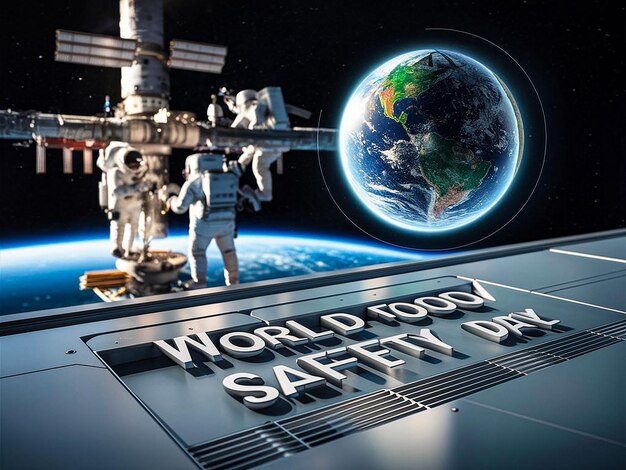
The International Space Station (ISS)
The International Space Station (ISS), a multinational collaborative project involving
NASA
,
Roscosmos
,
ESA
(European Space Agency),
JAXA
(Japan Aerospace Exploration Agency), and
CSA
(Canadian Space Agency), is a unique microgravity laboratory that serves as a test bed for new technologies and a platform for studying the effects of long-term space travel on humans.
With a length of approximately 109 meters and a living space greater than five tennis courts, the ISS is the largest human-made structure in low Earth orbit. Its partners continue to invest and develop the station, with new scientific research being conducted daily. The collaborative project began in 1984 with the vision of creating a global laboratory for conducting research and technology development that would benefit all humanity.
Some notable objectives of the ISS include:
1.
Studying human health and performance in space – understanding how to keep astronauts healthy during extended missions to support deep-space exploration;
2.
Conducting microgravity research – investigating how physical and chemical processes behave in a zero-gravity environment; and,
3.
Testing new technologies – developing innovations to improve life on Earth and in space.
Over the years, the ISS has been continuously inhabited since November 2000, with astronauts from various nations living and working together, demonstrating true international cooperation in space exploration. The research conducted on the ISS not only benefits our understanding of space but also contributes to improving life on Earth.

Spacewalks, also known as extravehicular activities (EVAs), are essential missions conducted by astronauts to carry out various tasks outside of spacecraft or
space stations
. These activities require astronauts to wear specialized
pressure suits
that protect them from the harsh conditions of space. The primary objectives of spacewalks include performing
repairs
and maintenance on the exterior of spacecraft or stations, installing new equipment, and conducting
scientific experiments
. The first recorded spacewalk occurred on March 18, 1965, during the NASA Gemini 3 mission by astronauts Gus Grissom and John Young. Since then, spacewalks have become a critical component of space exploration, enabling astronauts to work on the International Space Station (ISS) and other orbiting platforms. During these missions, astronauts often need to maneuver around the spacecraft using handrails or robotic assistance to complete their tasks effectively and safely.

Meteorites: These are
solar system
and its
history
. They provide us with a unique perspective on the composition and evolution of celestial bodies. Some meteorites are rich in
minerals
and elements that cannot be found on Earth, shedding light on the cosmic conditions under which they were formed. Others contain
isotopes
that help scientists date the age of the solar system and understand its chronological sequence. Meteorites have played a significant role in advancing our knowledge about the universe, making them truly precious natural resources.
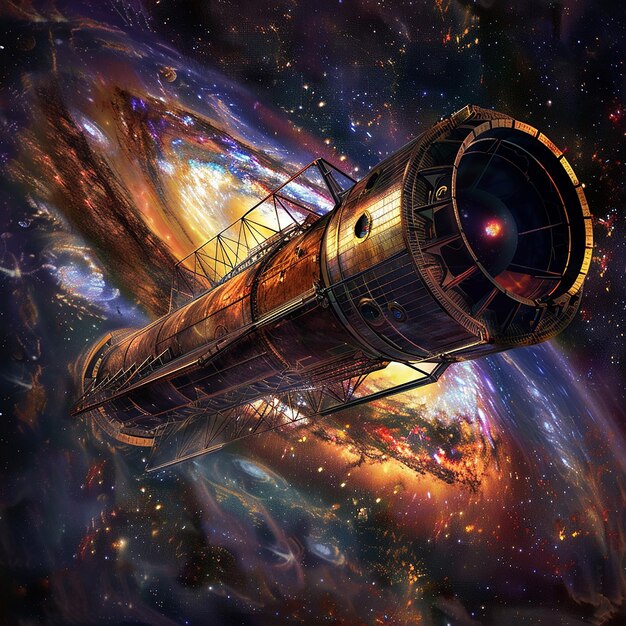
Space Telescopes:
Space telescopes, which observe the universe beyond the earth’s atmosphere, have revolutionized our understanding of the cosmos. Some of the most advanced examples include:
Hubble Space Telescope
Launched in 1990, the Hubble Space Telescope has provided some of the most detailed and stunning images of distant galaxies, nebulae, and stars. Its high resolution and sensitivity have led to numerous discoveries in various fields of astronomy.
James Webb Space Telescope (JWST)
Scheduled for launch in 2021, the James Webb Space Telescope (JWST) is expected to be the successor to Hubble. JWST is designed to provide even more detailed and accurate observations in the infrared range of the electromagnetic spectrum. Its capabilities include imaging the earliest galaxies in the universe, studying the atmospheres of exoplanets, and investigating the formation of stars and galaxies.
Spitzer Space Telescope
The Spitzer Space Telescope, launched in 2003, is a space telescope designed to conduct infrared astronomy. Its infrared capabilities allow it to observe objects that are obscured by dust and gas, providing unique insights into the universe’s hidden structures. Spitzer has made significant contributions to our understanding of star formation, galaxies, and the interstellar medium.
Other Notable Space Telescopes
There are several other notable space telescopes that have made significant contributions to our understanding of the universe, including:
- Chandra X-ray Observatory: Launched in 1999, Chandra is a telescope that detects X-rays. It has provided insights into various astronomical phenomena such as supernovae remnants, active galactic nuclei, and the hot interstellar medium.
- Suzaku X-ray Observatory: Launched in 2005, Suzaku is a Japanese X-ray observatory that has studied various astronomical objects such as active galactic nuclei, supernova remnants, and the interstellar medium.
These telescopes, along with the Hubble, JWST, and Spitzer, have expanded our knowledge of the universe by providing unprecedented insights into various astronomical phenomena. Their discoveries continue to fuel our curiosity and inspire future generations of astronomers.

Rockets, as
space transportation systems
, play a crucial role in launching various payloads, such as humans, satellites, and scientific equipment, into the
orbital realm
. This engineering marvel is a testament to human ingenuity and our relentless pursuit of exploration and discovery beyond our planet’s boundaries.
Design and Function
A rocket, in its simplest form, is a vehicle that converts stored chemical energy into kinetic energy, which propels it forward. This transformation occurs through a controlled explosion of the rocket’s fuel within its engines. The resulting force drives the rocket upward, enabling it to overcome Earth’s gravitational pull and escape into space.
Stages of a Rocket
Typically, rockets have multiple stages, each with its own engine and fuel supply. As the first stage burns out, it is jettisoned to reduce the overall weight of the rocket, allowing subsequent stages to carry the payload further into space. This multistage design enables efficient use of resources and maximizes the payload’s ultimate velocity.
Historical Significance
From the first successful launch of Sputnik 1 in 1957 to the most recent manned missions to the International Space Station, rockets have revolutionized the way we explore and utilize space. These remarkable vehicles continue to inspire innovation and push the boundaries of human knowledge, enabling us to reach new heights and expand our horizons in the vast cosmos.
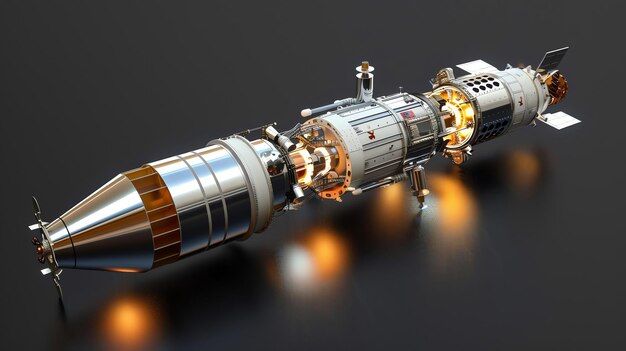
Rockets Engines: The propulsion system is a crucial component of any rocket, enabling them to overcome Earth’s gravity and reach extraordinary velocities. Rocket engines come in various types, each with its unique advantages and applications.
Solid Fuel Engines
The most basic type is the solid fuel rocket engine. These engines use a solid propellant that is ignited at launch and burns continuously until the fuel is exhausted. Solid fuel rockets are simple in design, reliable, and relatively inexpensive to produce. However, they offer less control over engine performance compared to other types.
Liquid Fuel Engines
More advanced are liquid fuel rocket engines. In these engines, liquid fuels (both propellant and oxidizer) are stored separately and brought together in the combustion chamber to react and produce thrust. Liquid fuel rockets offer much greater control over engine performance, allowing for adjustments during flight. They are used primarily in large, complex spacecraft due to their complexity and cost.
Hybrid Engines
A middle ground between solid and liquid fuel engines are hybrid rocket engines. These engines use a combination of solid and liquid fuels. The solid fuel provides initial thrust at ignition, while the liquid fuel is used for fine tuning and controlling engine performance during flight. Hybrid engines are simpler than liquid fuel engines but offer more control than solid fuel engines. They are mostly used in smaller rockets and research applications.
Electric Propulsion Engines
An entirely different category is that of electric propulsion engines. Instead of relying on a combustion process to generate thrust, electric propulsion engines use an electric field to accelerate ions or electrons. Electric propulsion engines are highly efficient and produce much less exhaust mass compared to conventional rocket engines, making them ideal for long-duration space missions where fuel efficiency is crucial.

Space Shuttles: A Game-Changer in Space Travel
From 1981 to 2011, NASA’s Space Shuttles served as the workhorse of low Earth orbit, transporting crews and cargo to and from the International Space Station (ISS) with
reusable spacecrafts
, each named after a famous astronaut or spacecraft, revolutionized the way we access and utilize space.
The Fleet:
The Space Shuttle fleet consisted of five orbiters: Discovery, Atlantis, Challenger, Endeavour, and Columbia. Unfortunately, two tragic accidents – the Challenger disaster in 1986 and the Columbia accident in 2003 – claimed the lives of thirteen astronauts.
The Missions:
Over their thirty-year tenure, the Space Shuttles completed 135 missions, launching more than 200 astronauts and supporting over 2,400 experiments in various scientific fields. They also deployed numerous satellites for communications, weather forecasting, and other purposes.
The Retirement:
In 2011, NASA retired the Space Shuttles in favor of new spacecrafts, such as the link and the SpaceX’s Dragon, which are designed for different missions and use newer technologies. Despite their retirement, the Space Shuttles continue to be cherished as symbols of human innovation and achievement in space exploration.
Satellites, as
artificial objects
, are intentionally
communication
, enabling long-distance connections and internet access across vast regions. Others are dedicated to
navigation
, like GPS satellites, which provide location data and facilitate safe travel both on land and at sea. Weather forecasting is another crucial application of satellites, with meteorological satellites providing valuable
information
about atmospheric conditions and weather patterns. Additionally, there are
remote sensing satellites
that gather data about the Earth’s surface and environment, contributing significantly to scientific research, environmental monitoring, and disaster management. These
advanced tools
, orbiting our planet, have revolutionized various industries and aspects of modern life.
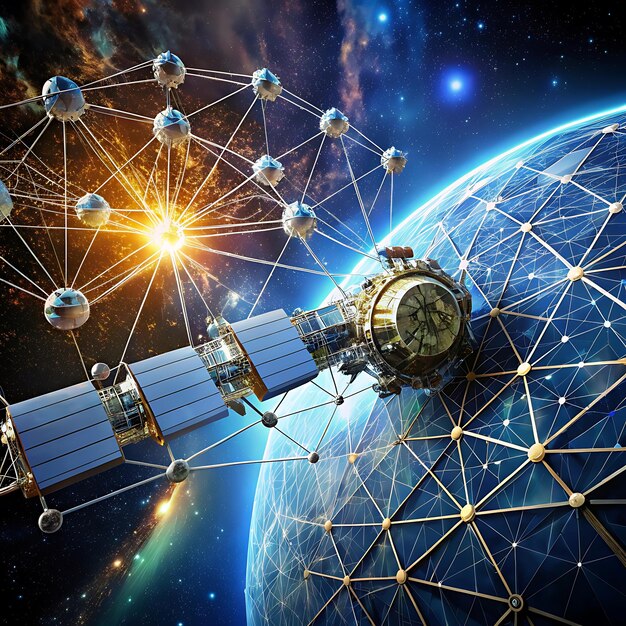
Satellite Constellations
Satellite constellations, a crucial component of Space Technology, refer to systems of satellites placed in low Earth orbit (LEO) to provide global coverage for various applications. Two notable examples are Elon Musk’s link and Bharti Enterprises’ link. These satellite networks are revolutionizing industries like internet connectivity, enabling faster and more reliable connections in remote areas where terrestrial infrastructure may be lacking.
The Role of Satellite Constellations in Internet Connectivity
By deploying hundreds, if not thousands, of satellites in LEO, constellations like Starlink and OneWeb can offer low-latency, high-speed internet services to a vast number of users across the globe. This is particularly beneficial for areas where terrestrial infrastructure is limited or non-existent, such as rural communities, remote islands, and even onboard aircraft. The satellites in these constellations are designed to work together, allowing them to maintain constant coverage of Earth.
Key Features and Benefits of Satellite Constellations
- Global Coverage: Satellites in LEO provide coverage to areas not reachable by terrestrial networks.
- Low-Latency: The proximity of the satellites in LEO allows for faster data transmission and lower latency compared to traditional geostationary satellites.
- Reliability: A large number of satellites in a constellation can ensure redundancy and reliability, as users can switch to another satellite if one fails.
- Scalability: Satellite constellations are highly scalable, allowing for the addition of more satellites to cater to increasing demand.
The Future of Satellite Constellations
As technology continues to advance, satellite constellations like Starlink and OneWeb will undoubtedly play an increasingly significant role in the future of internet connectivity. These networks are poised to bridge the digital divide, providing high-speed internet services to underserved communities and remote areas that have previously been left behind. With ongoing research and development in areas like reusable rockets, solar-powered satellites, and advanced antenna technologies, the possibilities for satellite constellations are truly limitless.
In Conclusion
Satellite constellations, like Starlink and OneWeb, represent a major leap forward in providing reliable, low-latency internet connectivity to users across the globe. With their potential to offer global coverage, scalability, and high reliability, these networks are poised to revolutionize industries and make a significant impact on our daily lives. As technology continues to evolve, we can look forward to a future where high-speed internet connectivity is accessible to everyone, regardless of their location.
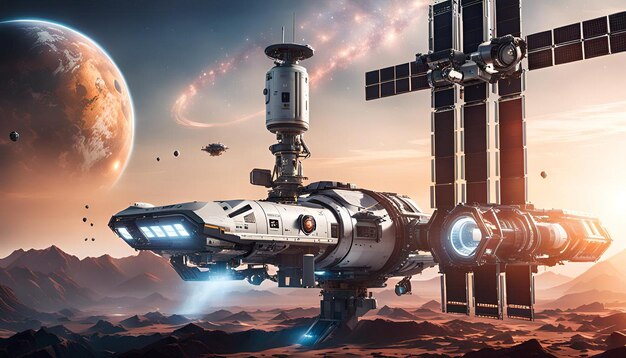
Space Probes:
Space probes, also known as unmanned spacecraft, are technological marvels designed to
explore other planets and celestial bodies
in our solar system and beyond. Since their inception, they have revolutionized the way we understand the universe, providing
valuable data
about various celestial bodies and phenomena. The first space probe was Sputnik 1, launched by the Soviet Union in 1957, which marked the beginning of the Space Age. Since then, numerous space probes have been sent to explore the Moon, Mars, Venus, Jupiter, Saturn, Uranus, Neptune, and even beyond our solar system.
Moon probes, such as the
Apollo moon landing missions
(1969-1972), have significantly advanced our knowledge about the Moon, including its geology and the presence of water ice.
Mars probes
(such as Mars Pathfinder, Curiosity Rover, and Perseverance Rover) have provided compelling evidence of water on the Martian surface, raising the question of the potential existence of life on the Red Planet.
Venus probes
(like Magellan Orbiter and Venus Express) have revealed the extreme conditions on Venus, including its acidic atmosphere and surface temperatures hot enough to melt lead.
Jupiter probes
(such as Galileo Orbiter and Juno) have discovered numerous moons, rings, and provided insights into Jupiter’s composition and weather patterns.
Saturn probes
(including Cassini-Huygens) have unveiled Saturn’s intricate ring system and its numerous moons, including Enceladus, which harbors geothermal activity.
Deep space probes
(such as Voyager 1 and New Horizons) have ventured beyond our solar system, providing the first glimpses of interstellar space and encounters with other celestial bodies like Pluto, Charon, Eris, and Makemake.
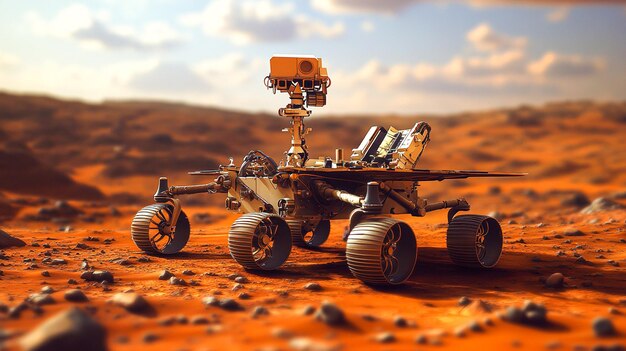
Mars Rovers:
Mars Rovers, a series of robotic vehicles sent by NASA (National Aeronautics and Space Administration) to explore the surface
geology
and climate of Mars, are pioneering the way for human exploration of our neighboring planet. The first rover, Sojourner Rover, landed on Mars in 1997 and provided the first up-close images and data from the planet’s surface. Since then, other rovers like Spirit and Opportunity (2004),
Curiosity Rover
(2012),
Perseverance Rover
(2021) and more have followed, each with advanced capabilities for conducting extensive research. These rovers are equipped with a variety of scientific instruments like cameras, spectrometers, microphones, and laboratories to analyze Martian soil, rocks, and atmosphere. By studying the
geological
features and climatic conditions on Mars, these rovers are contributing significantly to our understanding of the Red Planet and paving the way for future manned missions.
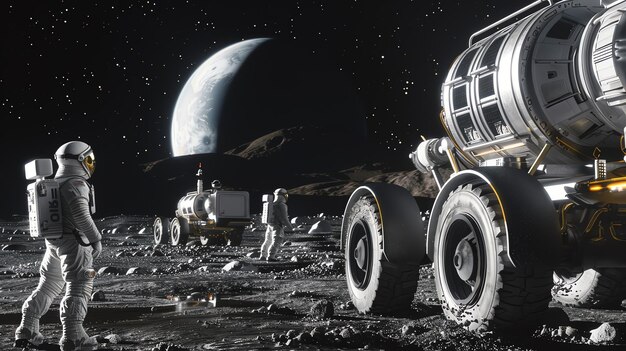
The Historic Moon Landing: A Turning Point in Human History
July 20, 1969:
On this momentous day, Neil Armstrong and Buzz Aldrin, two brave astronauts from NASA’s Apollo 11 mission, made history by becoming the first
To Set Foot on the Moon
With the world watching, Armstrong descended the ladder of the lunar module “Eagle,” and as he stepped onto the moon’s surface, he famously declared, “That’s one small step for man, one giant leap for mankind.
” Aldrin followed closely behind, joining Armstrong on this unprecedented journey.
The Groundbreaking Mission
This monumental achievement marked the culmination of years of hard work, dedication, and innovation by NASA and thousands of scientists, engineers, and support staff. The successful moon landing not only advanced human knowledge and understanding of space but also solidified the United States’ position as a global leader in space exploration.
Legacy and Impact
The Moon Landing paved the way for future space exploration, including manned missions to Mars and beyond. It inspired generations of scientists, engineers, and dreamers to push the boundaries of human knowledge and reach for new heights. The world continues to celebrate this historic event as a turning point in human history.
Space Suits: The Essential Gear for Astronauts
Space suits are an essential component of any space mission, designed to protect astronauts from the harsh conditions of space. These garments provide a critical barrier against various hazards, making it possible for humans to explore and work in the extreme environment of space. Here’s a closer look at some of the key challenges that space suits help astronauts overcome:
Temperature Extremes
Space is a vacuum and lacks an atmosphere, meaning that there’s no natural protection from temperature fluctuations. Space suits help regulate the astronaut’s body temperature by maintaining a stable environment inside the suit. Some spacesuits are designed for extremely cold conditions, like those used during moon landings or on Mars missions, while others are suited for warmer environments, like the International Space Station.
Vacuum
Vacuum
is the absence of atmospheric pressure, which can cause the body to rapidly lose heat and fluids in space. Space suits maintain a stable internal pressure, preventing the astronaut’s organs from collapsing and keeping their body functions working normally. This is especially critical during extra-vehicular activities (EVAs) when astronauts leave the spacecraft to perform maintenance or repairs.
Micro-meteoroids
Micro-meteoroids
are tiny particles that constantly bombard spacecraft and astronauts in orbit. These particles can cause significant damage if they penetrate the spacecraft or the astronaut’s suit. Space suits are designed with multiple layers of protective material to shield against micro-meteoroid impacts, ensuring the safety and wellbeing of astronauts during space travel.
Summary
In summary, space suits are vital for human survival and exploration in the harsh conditions of space. They protect against temperature extremes, vacuum, and micro-meteoroids, enabling astronauts to perform essential tasks outside a spacecraft and pave the way for new discoveries.
Further Reading
For more information on space suits, check out NASA’s Space Suit Technology page: link

Space Food: The Essential Nourishment for Astronauts in Space
Space food is a crucial aspect of space exploration that ensures astronauts receive the necessary nutrients to maintain their health and well-being while in orbit. Special meals are prepared with extreme care, taking into account the unique challenges of space travel. The food is designed to provide astronauts with all the essential nutrients and calories they need to perform their duties effectively.
Challenges of Preparing Space Food
Preparing food for space travel presents numerous challenges. For instance, astronauts face a microgravity environment that alters the way food behaves and how it is consumed. Moreover, preserving the food’s freshness, taste, and nutritional value during the long journey to space and while in orbit can be a challenge.
Designing Space Food: Nutrition, Taste, and Convenience
Nutrition: NASA’s space food is meticulously designed to provide astronauts with the necessary vitamins, minerals, and macronutrients. NASA collaborates with food scientists, engineers, and nutritionists to create meals that cater to astronauts’ dietary requirements and preferences.
Taste
To maintain morale and ensure that astronauts enjoy their meals, food scientists pay close attention to taste. They develop recipes that mimic the flavors of familiar terrestrial dishes, using freeze-dried and thermostabilized ingredients.
Convenience
The convenience of space food is essential, given the unique conditions in which astronauts eat. Food is typically packaged in individual portions and vacuum-sealed to prevent spoilage. Some meals are designed to be eaten without heating or using utensils, making them ideal for space travel.
Advancements in Space Food Technology
In recent years, advancements in space food technology have allowed for more varied and tasty meals. For example, NASA has developed 3D-printed food that can be customized to individual nutritional requirements and preferences. Additionally, astronauts on the International Space Station (ISS) can now enjoy fresh produce grown aboard the station using a vegetable production system.
Innovative Packaging Technologies
One area of innovation in space food is packaging technology. For instance, NASA is researching edible films that can be used to package food and provide essential nutrients. These films can be designed to release specific vitamins or minerals when the astronaut consumes the food, ensuring that they receive a well-rounded diet.

Space Camps: An intriguing and enlightening
educational experience
awaits students at various institutions and programs dedicated to the exploration of space, astronomy, and related fields. These
immersive learning environments
, often referred to as space camps, are designed to ignite a passion for science, technology, engineering, and mathematics (STEM) among young learners. From
building model rockets
to
conducting experiments in microgravity conditions
, these programs offer a unique blend of
hands-on activities and theoretical instruction
. By engaging students in space-related topics, these camps inspire curiosity and foster a deeper understanding of the universe around us. Whether it’s through collaborative projects, interactive simulations, or expert-led workshops, participants leave with valuable skills and knowledge that can serve as a foundation for future careers in STEM fields.

Space Art, a captivating and intriguing genre, encompasses various forms of creative expressions inspired by the wonders of space exploration and the cosmos. This art form has been evolving since the dawn of space travel, capturing the human imagination and fueling our fascination with the final frontier. From
paintings
and
illustrations
to
photographs
and even
sculptures
, space art transcends the boundaries of traditional art.
Paintings and Illustrations:
Artists, inspired by the vastness of space and the beauty of celestial bodies, have been creating paintings and illustrations that capture the essence of the universe. These artworks often depict galaxies, nebulae, stars, and planets in stunning detail, transporting viewers to other worlds. Some renowned artists in this genre include Clyde Tombaugh, famous for discovering Pluto, and Roy Thomas, known for his detailed space illustrations.
Photographs:
With the advent of advanced technology and space exploration, photography has become an integral part of space art. NASA’s Hubble Space Telescope, for instance, has provided breathtaking images of deep space, including the famous “Pillars of Creation.” These photographs not only serve as scientific data but also inspire artists and art enthusiasts alike.
Sculptures:
Space art transcends two-dimensional media with sculptures, creating tangible, three-dimensional representations of celestial bodies and space travel. These sculptures can be found in various public spaces, inspiring awe and wonder in those who encounter them. For example, the “Cosmos” sculpture by Jacob El Hanani depicts a human figure surrounded by celestial bodies.
The Impact of Space Art:
Space art holds significant cultural value, reflecting humanity’s ongoing fascination with space exploration and the cosmos. It not only inspires us but also serves as an educational tool, helping people better understand our place in the universe. Moreover, space art provides a platform for artists to express their creativity and vision, pushing the boundaries of artistic expression and capturing the collective human imagination.

Space Mythology: A Journey Through Ancient Cosmic Beliefs
Celestial Bodies and Divine Beings
Space Mythology, an intriguing branch of mythology, delves into the ancient beliefs and stories surrounding celestial bodies. This fascinating exploration reveals how various ancient civilizations perceived gods living on the Moon and planets associated with different deities.
Myths of Lunar Gods
The Moon, with its ever-changing phases, was believed to be the abode of numerous lunar deities. In Greek mythology, for instance, Selene, the goddess of the Moon, was known to ride a chariot pulled by horses or deer. The Romans held Luna, their equivalent lunar goddess, in high regard.
Planetary Deities
Similarly, planets were often personified and linked to various deities. In Roman mythology, Mars, the god of war, was associated with the planet of the same name. The Egyptian mythology assigned the god Ra to represent the Sun and Osiris, the god of fertility, to Venus.
Stars and Constellations
Space mythology also extends to the stars and constellations, which were believed to be the forms of gods and mythological creatures. The Pleiades, a star cluster in the constellation Taurus, was believed to be home to the Seven Sisters, according to Greek mythology.
A Continuous Influence
The ancient myths about celestial bodies continue to fascinate and influence us even today. Their stories live on in literature, art, and culture, serving as a reminder of the rich and varied history of human beliefs.
Space Legends:
Throughout history, the vast expanse of space has captured the imagination of humans. From ancient myths and tales to modern-day science fiction, stories about the cosmos have captivated us for thousands of years. Two such stories that continue to intrigue are the legends of
Perseus and Andromeda
.
According to Greek mythology, Perseus, a brave hero, was tasked with saving the beautiful princess Andromeda from a terrible fate. The prophecy foretold that a monstrous sea creature, the
Crab Monster
, would rise from the sea and devour Andromeda unless she was rescued. With the help of the gods, Perseus set out on a dangerous journey to defeat the creature and save the princess. He used his cunning and bravery to overcome various obstacles, ultimately defeating the Crab Monster and saving Andromeda.
Another intriguing space legend is the story of make this bold, the story of “Star People,” or extraterrestrial beings. For centuries, there have been reports and tales of encounters with beings from other planets or galaxies. Some claim to have had personal experiences with these beings, while others believe the stories are merely myths or hoaxes. Despite the lack of concrete evidence, the belief in Star People persists, fueled by our innate curiosity about the universe and what might lie beyond.
These
cosmic tales
serve as a reminder of our fascination with the unknown, and the power of stories to inspire, entertain, and capture the imagination. Whether based on ancient mythology or modern-day speculation, space legends continue to captivate us, transporting us to far-off galaxies and new worlds.




